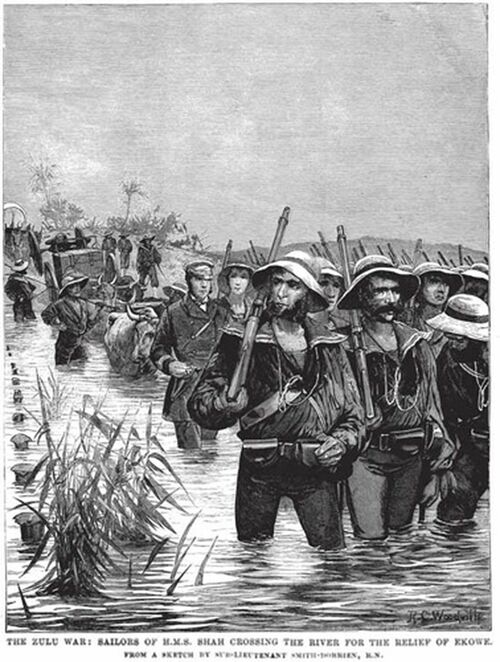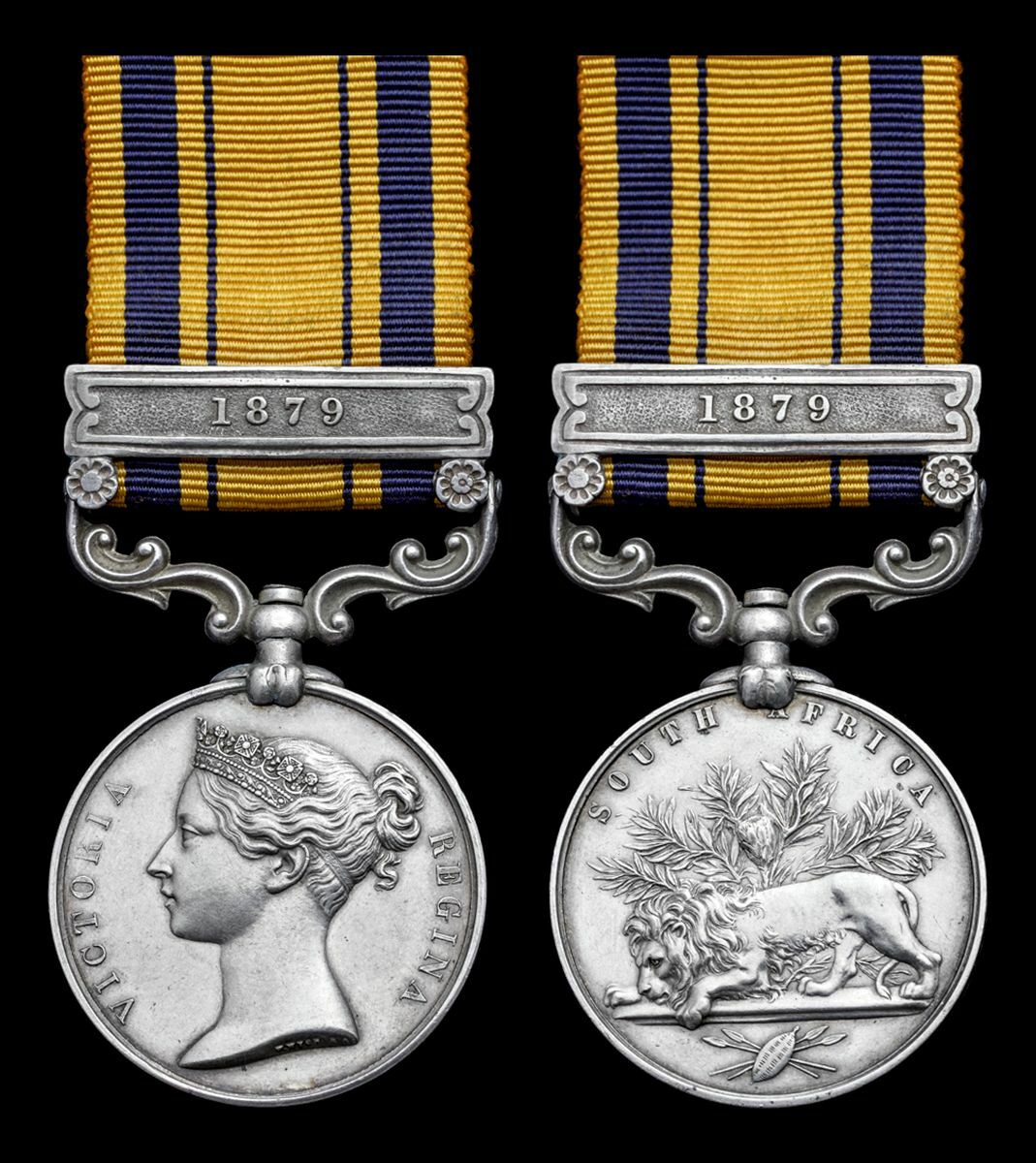Auction: 24002 - Orders, Decorations and Medals
Lot: 65
The South Africa Medal awarded to Quarter Master Sergeant P. Farrell, who was present in Colonel Pearson's Column for the Siege of Eshowe during the Anglo-Zulu War
South Africa 1877-79, 1 clasp, 1879 (782. Qr Mr Sergt P. Farrell. 99th Foot.), nearly extremely fine
Provenance:
Spink, November 1998.
Patrick Farrell was the only Quarter Master Sergeant of the regiment to see service during the South Africa campaign of 1879, and is confirmed upon the roll with entitlement to this clasp.
Farrell was born in Limerick, Ireland in 1840 and enlisted with the 99th Foot (Lanarkshire) at Cork in 1859. He served with his regiment in China from 1860 to 1865, unfortunately too late to be eligible for the China medal. Farrell was promoted to Corporal and then to Sergeant before being posted to Natal in April 1865. There, he was appointed to Colour Sergeant the following year and moved to Saint Helena Bay in 1867. Farrell was made Quarter Master Sergeant in 1874 and was awarded a Long Service and Good Conduct medal with a £5 gratuity in 1877.
During the Anglo-Zulu War, Farrell was included in one of the six companies of the 99th Foot that formed part of Colonel Charles Pearson's No. 1 Column, which had been ordered to establish a base at Eshowe which came under siege by the Zulus early in 1879. The British were attacked by the Zulus near the Inyezane River while marching to Eshowe and managed to repel the large Zulu force through artillery fire, resulting in 350 Zulu losses while the British suffered just ten casualties. The fighting took place the same day as the infamous Battle of Isandlwana, and the Zulu forces present at both engagements were dispatched at the same time. The following day on 23 January, Pearson's Column reached Eshowe and began to fortify the mission station. Soon after their arrival, Pearson received word from Lord Chelmsford warning that the Column could come under attack by the full force of the Zulu army, and Pearson would have to decide whether to retreat or stay at Eshowe to preserve his men. Initially short on provisions, Pearson chose to remain at Eshowe after receiving supplies and reinforcements from the Lower Drift. Zulus began to amass on the surrounding hills in early February and the Column lost communication with the rest of the army, realising that their garrison had been cut off and was now under siege. Rations dwindled and disease spread, but the men found a way to communicate with the nearby fort at Tugela. They ingeniously used a heliograph to transmit Morse code messages, and it was in this fashion that the garrison was informed that a relief column was coming to meet them. However, while en-route the large relief column led by Lord Chelmsford was attacked by the Zulus at what became known as the Battle of Gingindlovu. The Battle resulted in a British victory and heavy Zulu losses and, once free to continue to Eshowe, the 91st Highlanders heralded the relief column's arrival which ended the 2-month siege.
Less than a year after the end of the siege, Farrell was discharged at Camp Pinetown in the Cape of Good Hope having claimed the end of his period of engagement. Farrell served for 21 years, and after his discharge intended to remain in South Africa and live in Dunbar; sold together with copied research.
Subject to 20% VAT on Buyer’s Premium. For more information please view Terms and Conditions for Buyers.
Sold for
£1,100
Starting price
£550







